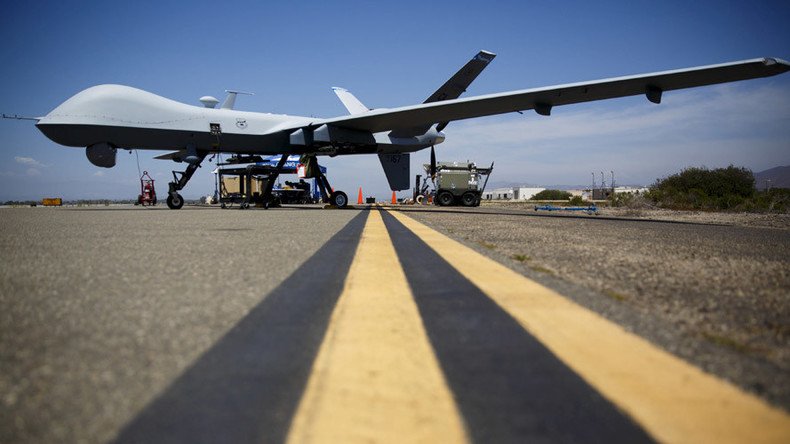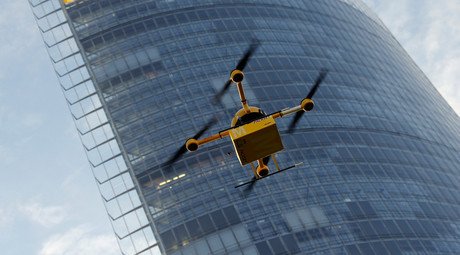DARPA’s upcoming drone to land anywhere, carry as much as Reapers do

The US is making big strides in ever more effective drone deployment. The Navy is readying to get a new vehicle capable of landing on water and carrying as much ammo as the deadly Reaper drone. The design dates back to the 1950s.
This DARPA project is being realized following a proposal from the firm Northrop Grumman, which is due to receive the contract in January. Any footage is being kept under wraps for now – only LA press on December 11 was allowed a limited tour of the facilities where the Tern concept, as it is called, is being designed.
The prototype should be coming soon and will launch from a decommissioned navy ship, according to the company’s senior vice-president for research Chris Hernandez, who spoke to FlightGlobal.
The flying-wing tailsitter design will enable the drone to land on naval ships much smaller than aircraft carriers. The design forms the core of Northrop’s proposal, and actually originates from drawings made more than 60 years ago for the Lockheed XFV-1 concept. This tailsitter design is now being supplemented with a flying-wing configuration.
The advantage of Tern, according to DARPA, is that it can “operate from DDG-class ships or smaller, with the ability to carry a 272kg (600lb) payload up to 900 nautical miles (1,670 km). It also must be able to land vertically on a rolling deck in Sea State 5 conditions, meaning waves between 2.5m to 4m tall.”
The roughly 9-meter wingspan of the Tern will come with a set of large counter-rotating propellers, Hernandez says. Underneath the wing will be storage for weapons and sensors.
Still to come is a wind performance test, with data to arrive next month. “Many people will hold their reservations until they see the wind tunnel data,” Hernandez says.
It was only in October that DARPA had announced the development of a different drone – one that disappear (self-destruct) into thin air under the sun’s light, after delivering its payload.
The program is called Inbound Controlled Air-Releasable Unrecoverable Systems, or snappily titled as ICARUS for short. The acronym is a reference to the Greek mythological figure of the same name, a boy who used his craftsman father’s wax-and-feather wings to escape Crete, flew too close to the sun, and fell to his death when the wings melted.
“DARPA’s new ICARUS program aims to mimic the material transience that led to Icarus’ demise, but leverages that capacity in scenarios with more uplifting endings,” the agency said in a press release.













